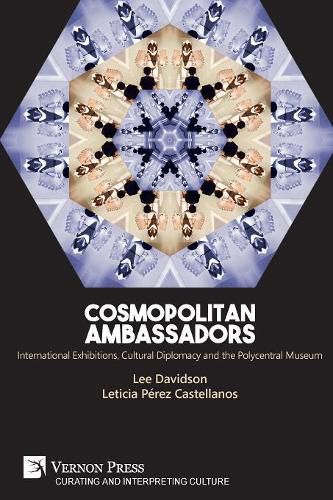Readings Newsletter
Become a Readings Member to make your shopping experience even easier.
Sign in or sign up for free!
You’re not far away from qualifying for FREE standard shipping within Australia
You’ve qualified for FREE standard shipping within Australia
The cart is loading…






This title is printed to order. This book may have been self-published. If so, we cannot guarantee the quality of the content. In the main most books will have gone through the editing process however some may not. We therefore suggest that you be aware of this before ordering this book. If in doubt check either the author or publisher’s details as we are unable to accept any returns unless they are faulty. Please contact us if you have any questions.
How are museums working internationally through exhibitions? What motivates this work? What are the benefits and challenges? What factors contribute to success? What impact does this work have for audiences and other stakeholders? What contributions are they making to cultural diplomacy, intercultural dialogue and understanding? Cosmopolitan Ambassadors first considers the current state of knowledge about international exhibitions and proposes an interdisciplinary analytical framework encompassing museum studies, visitor studies, cultural diplomacy and international cultural relations, cosmopolitanism and intercultural studies. It then presents a comprehensive empirical analysis of an exhibition exchange involving two exhibitions that crossed five countries and three continents, connecting six high profile cultural institutions and spanning almost a decade from initial conception to completion. A detailed comparison of both the intercultural production of international exhibitions by museum partnerships and by the interpretive acts and meaning-making of visitors, reveals the many complexities, challenges, tensions and rewards of international exhibitions and their intersection with cultural diplomacy. Key themes include the realities of international collaboration, its purposes, processes and challenges; the politics of cultural (self-)representation and Indigenous museology; implications for exhibition design, interpretation, and marketing; intercultural competency and museum practice; audience reception and meaning-making; cultural diplomacy in practice and perceptions of its value. This first-ever empirically-grounded, theoretical analysis provides the basis of a new model of museums as polycentral: as places that might produce a kaleidoscopic vision of multiple centres and help to dissolve cultural boundaries by encouraging dialogue, negotiation and the search for intercultural understandings. Guidelines for practice include recommendations for successful international museum partnerships, exhibition development and maximizing the potential of museum diplomacy.
$9.00 standard shipping within Australia
FREE standard shipping within Australia for orders over $100.00
Express & International shipping calculated at checkout
This title is printed to order. This book may have been self-published. If so, we cannot guarantee the quality of the content. In the main most books will have gone through the editing process however some may not. We therefore suggest that you be aware of this before ordering this book. If in doubt check either the author or publisher’s details as we are unable to accept any returns unless they are faulty. Please contact us if you have any questions.
How are museums working internationally through exhibitions? What motivates this work? What are the benefits and challenges? What factors contribute to success? What impact does this work have for audiences and other stakeholders? What contributions are they making to cultural diplomacy, intercultural dialogue and understanding? Cosmopolitan Ambassadors first considers the current state of knowledge about international exhibitions and proposes an interdisciplinary analytical framework encompassing museum studies, visitor studies, cultural diplomacy and international cultural relations, cosmopolitanism and intercultural studies. It then presents a comprehensive empirical analysis of an exhibition exchange involving two exhibitions that crossed five countries and three continents, connecting six high profile cultural institutions and spanning almost a decade from initial conception to completion. A detailed comparison of both the intercultural production of international exhibitions by museum partnerships and by the interpretive acts and meaning-making of visitors, reveals the many complexities, challenges, tensions and rewards of international exhibitions and their intersection with cultural diplomacy. Key themes include the realities of international collaboration, its purposes, processes and challenges; the politics of cultural (self-)representation and Indigenous museology; implications for exhibition design, interpretation, and marketing; intercultural competency and museum practice; audience reception and meaning-making; cultural diplomacy in practice and perceptions of its value. This first-ever empirically-grounded, theoretical analysis provides the basis of a new model of museums as polycentral: as places that might produce a kaleidoscopic vision of multiple centres and help to dissolve cultural boundaries by encouraging dialogue, negotiation and the search for intercultural understandings. Guidelines for practice include recommendations for successful international museum partnerships, exhibition development and maximizing the potential of museum diplomacy.